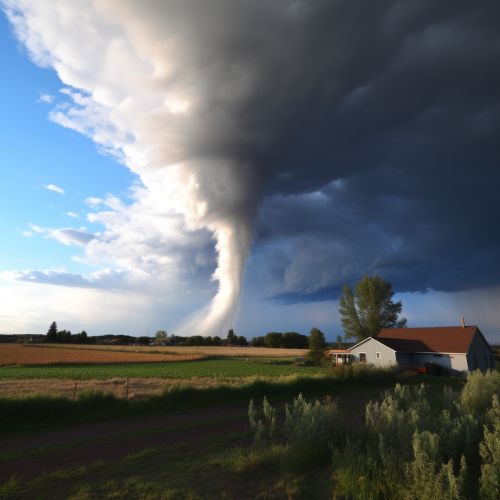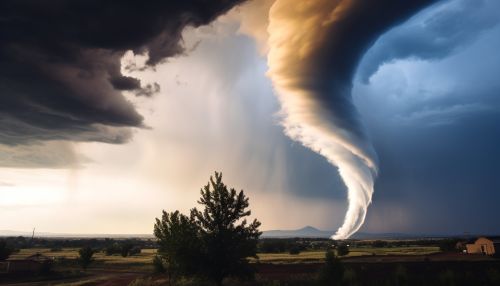Fujita scale
Overview
The Fujita scale, also known as the F-Scale, is a system used to rate the intensity of a tornado based on the damage it causes to human-built structures and vegetation. The scale was proposed in 1971 by Tetsuya Theodore Fujita, a prominent meteorologist at the University of Chicago, in collaboration with Allen Pearson, then head of the National Severe Storms Forecast Center/NSSFC. The scale was officially introduced in the United States in 1973.
Development
The development of the Fujita scale was a significant milestone in understanding and quantifying the destructive potential of tornadoes. Prior to its introduction, there was no standardized method for assessing tornado intensity. Fujita's work in this area was influenced by his earlier research on downburst and microburst weather phenomena, which led him to recognize the need for a more nuanced classification system for tornadoes.
Scale Details
The Fujita scale is divided into six levels, from F0 to F5. An F0 tornado, the least damaging, is capable of light damage, while an F5 tornado, the most damaging, can cause incredible devastation. The scale estimates the wind speed of the tornado based on the observed damage.
F0
An F0 tornado, also known as a "light tornado", can cause light damage to structures and vegetation. Winds for this category of tornado are estimated to be between 40 and 72 mph.
F1
An F1 tornado, or "moderate tornado", can cause moderate damage. Winds for this category of tornado are estimated to be between 73 and 112 mph.
F2
An F2 tornado, or "significant tornado", can cause significant damage. Winds for this category of tornado are estimated to be between 113 and 157 mph.
F3
An F3 tornado, or "severe tornado", can cause severe damage. Winds for this category of tornado are estimated to be between 158 and 206 mph.
F4
An F4 tornado, or "devastating tornado", can cause devastating damage. Winds for this category of tornado are estimated to be between 207 and 260 mph.
F5
An F5 tornado, or "incredible tornado", can cause incredible damage. Winds for this category of tornado are estimated to be between 261 and 318 mph.


Limitations and Criticisms
Despite its widespread use, the Fujita scale has been subject to criticism. One of the main criticisms is that it does not take into account the quality of construction of the structures that are damaged by the tornado. This can lead to inaccurate ratings, as a poorly constructed building may sustain severe damage from a relatively weak tornado, leading to an overestimation of the tornado's intensity.
Another criticism is that the Fujita scale is based on the damage caused by the tornado, rather than direct measurements of wind speed. This can also lead to inaccuracies, as the amount of damage caused by a tornado can be influenced by factors other than wind speed, such as the size and density of the debris field.
Enhanced Fujita Scale
In response to these criticisms, an enhanced version of the Fujita scale, known as the EF scale, was introduced in the United States in 2007. The EF scale addresses some of the limitations of the original Fujita scale by incorporating more damage indicators and degrees of damage, allowing for more detailed analysis and better correlation between damage and wind speed.
Conclusion
The Fujita scale has played a crucial role in our understanding of tornadoes and their potential for destruction. Despite its limitations, it remains a valuable tool for meteorologists and storm chasers alike. The introduction of the EF scale has further refined our ability to assess the intensity of tornadoes and will continue to aid in our understanding of these powerful natural phenomena.
